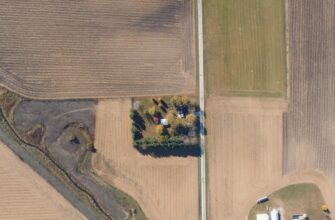- Introduction to ETH Farming with Rocket Pool
- Prerequisites Before You Start
- Step-by-Step Guide to Farming ETH on Rocket Pool
- Maximizing Your ETH Farming Returns
- FAQ: Rocket Pool ETH Farming Explained
- What’s the minimum ETH required to farm with Rocket Pool?
- How much can I earn farming ETH on Rocket Pool?
- Is running a Rocket Pool node risky?
- Can I withdraw my staked ETH anytime?
- Do I need technical skills to run a node?
- Final Tips for Successful ETH Farming
Introduction to ETH Farming with Rocket Pool
Farming ETH through Rocket Pool lets you earn passive income by participating in Ethereum’s proof-of-stake consensus. Unlike solo staking, Rocket Pool simplifies the process by allowing you to run a node with as little as 16 ETH while leveraging the platform’s decentralized node operator network. This guide breaks down every step to transform your ETH into a revenue-generating asset securely.
Prerequisites Before You Start
- ETH Balance: Minimum 16 ETH + extra for gas fees
- RPL Tokens: At least 1.6 ETH worth of Rocket Pool’s RPL token (10% collateral)
- Hardware: A dedicated device (e.g., Intel NUC, mini-PC) or cloud server
- Software: 64-bit OS (Linux recommended), Docker, and Rocket Pool’s Smartnode
- Ethereum Wallet: MetaMask or other Web3 wallet
Step-by-Step Guide to Farming ETH on Rocket Pool
- Install Rocket Pool Smartnode
Download the Smartnode installer for your OS from Rocket Pool’s official site. Run the installation script, which automatically configures Docker and sets up your node environment. - Initialize Your Node
Executerocketpool service initin your terminal. Choose “Hybrid” mode for optimal decentralization. Follow prompts to sync with Ethereum and Rocket Pool networks. - Fund Your Node Wallet
Transfer 16 ETH and RPL collateral (min 1.6 ETH worth) to your node’s wallet address usingrocketpool wallet statusto find the address. - Create a Minipool
Runrocketpool node deposit. Select “16 ETH” option. Confirm the transaction in your wallet. This creates your staking minipool. - Start Validating
Once your deposit is confirmed, Rocket Pool automatically registers your validator with the Beacon Chain. Your node now earns ETH staking rewards and RPL incentives. - Monitor Performance
Userocketpool service statsor the web-based Rocket Pool Dashboard to track uptime, rewards, and slashing risks. - Claim Rewards
Withdraw ETH and RPL earnings monthly viarocketpool node claim-rewards. Compounded rewards auto-stake until claimed.
Maximizing Your ETH Farming Returns
- Boost RPL Collateral: Staking up to 150% of your ETH value in RPL increases rewards via RPL incentives.
- Enable MEV: Activate Maximal Extractable Value (MEV) in Smartnode settings for bonus income from transaction ordering.
- Auto-Compound: Use Rocket Pool’s “Smoothing Pool” to automatically reinvest rewards for higher APY.
FAQ: Rocket Pool ETH Farming Explained
What’s the minimum ETH required to farm with Rocket Pool?
You need 16 ETH to create a minipool, plus additional ETH for gas fees and at least 1.6 ETH worth of RPL tokens as collateral.
How much can I earn farming ETH on Rocket Pool?
Current returns average 3-5% APR on ETH staking rewards plus 5-10% APR in RPL incentives, varying with network activity and collateral levels.
Is running a Rocket Pool node risky?
Slashing risks exist if your node goes offline or misbehaves, but Rocket Pool’s Safety Modules minimize penalties. Using reliable hardware reduces downtime risks.
Can I withdraw my staked ETH anytime?
ETH remains locked until Ethereum implements withdrawals (post-Shanghai upgrade). Rewards can be claimed monthly without unstaking.
Do I need technical skills to run a node?
Basic CLI knowledge is helpful, but Rocket Pool’s automated scripts handle 90% of operations. Community support via Discord provides real-time help.
Final Tips for Successful ETH Farming
Start with a testnet trial using Goerli ETH before committing real funds. Maintain regular node updates via rocketpool service update and monitor Rocket Pool’s official channels for protocol upgrades. With proper setup, your Rocket Pool node becomes a low-maintenance ETH farming engine.








